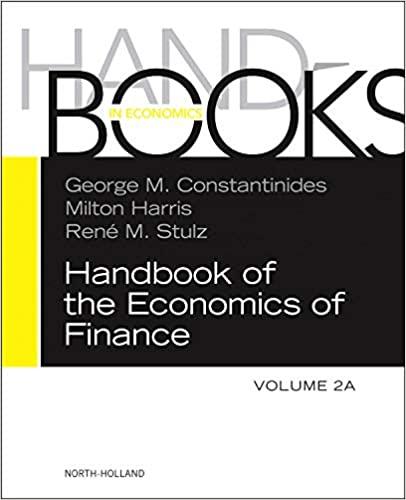Question
15.An interest-only loan is an example of a: a. fully-amortizing loan. b. loan with negative amortization. c. non-amortizing loan. d. partially-amortizing loan. 17. What is
15.An interest-only loan is an example of a:
a. fully-amortizing loan.
b. loan with negative amortization.
c. non-amortizing loan.
d. partially-amortizing loan.
17. What is the net benefit (loss) of the borrowers decision to refinance today given the following information and that she intends to move in 5 years?
Current loan closing costs: 2 points New loan type: 15-year fixed rate
Current loan original balance: $350,000 New loan interest: 5.00%
Current loan balance: $263,993.63 New loan total fees: 2.5 points
Current loan interest rate: 7.5% Individual discount rate: 6%
Current loan payment: $2,447.25 Income Tax Rate: 10%
a. $11,461.06
b. $13,321.16
c. $18,601.03
d. $23,495.89
e. None of the above
18. How long will it take you to breakeven assuming you take the refinance in question #17 using the same discount rate?
a. 28 months
b. 29 months
c. 30 months
d. 31 months
e. None of the above
19. Which of the following qualifies as technical default?
a. 30 days late on payment
b. an assisted sale
c. 90 days late on payments
d. a violation of the terms of the loan
20. Types of prepayment penalties include all of the following EXCEPT?
a. Yield maintenance
b. Assumability
c. Defeasance penalty
d. A percentage of the outstanding loan balance
21. Which of the following is NOT a type of conforming loan?
a. FHA
b. Jumbo
c. VA
d. Conventional
22. The benefits of an FHA loan vs a conventional loan include:
a. Lower down payment
b. Lower interest rate
c. Higher allowable HER and TDR
d. All of the above
23. Which of the following gives the borrower the ability to choose between a full-, partial-, non-, or negative-amortizing loan payment every year?
a. IO balloon mortgage
b. IO amortizing mortgage
c. Option ARM
d. Hybrid ARM
24. Loan origination occurs in the:
a. Primary market
b. Secondary market
c. Either of the above
d. Neither of the above
25. When the interest rate on an ARM either increases or decreases after being recalculated, this is due to movement in which of the following?
a. Margin
b. Index
c. Both
d. Neither
Step by Step Solution
There are 3 Steps involved in it
Step: 1

Get Instant Access to Expert-Tailored Solutions
See step-by-step solutions with expert insights and AI powered tools for academic success
Step: 2

Step: 3

Ace Your Homework with AI
Get the answers you need in no time with our AI-driven, step-by-step assistance
Get Started


